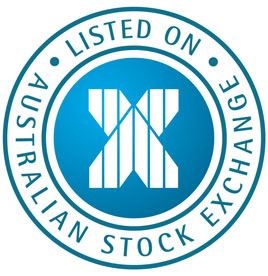
by Chris Weston, IG
Concerns around global growth have been cited as the reason behind the collapse in risk sentiment and that seems logical given the moves lower in US bond yields. However, most in the market knew there was a strong chance the IMF and World Bank would alter their forecasts some time ago.
It was even fairly clear cut that German industrial production had downside risks, yet still European markets saw sellers. Growth-sensitive currencies such as AUD actually rallied against the USD, despite the IMF actually increasing its view of US growth by a sizeable fifty basis points (or 0.5%). The moves all seem very convenient and thus built to fit a story.
The key issues, then, have to be the falls in US bond yields (due to buying) and the impact this had on USD/JPY (lower yields usually result in a lower USD/JPY). This has become the centre of the forex universe. Traders are pointing to the US ten-year treasury, which fell eight basis points. At 2.33%, they stand three basis points from printing a new low for the year. You can look further down the curve at the thirty-year treasury – this actually printed a lower low and looks extremely strong. It’s interesting, however, that the yield premium US treasuries command over German bunds has fallen somewhat over the last few days. Perhaps this is resulting in upside in pairs like EUR/USD and AUD/USD as well.
But it seems traders are questioning how this all ends. At current yields it’s hard to say the fixed income market believes that US rates will rise at all in 2015 (in line with Fed member Narayana Kocherlakota’s view). One could loosely argue that bond yields are suggesting QE could even be back on the table, although Fed commentary would suggest that has a very low possibility.
Either way, the great rotation trade at the start of the year (ie out of bonds and into stocks) has been flipped upside down and, with the S&P 500 breaking back below the November 2012 uptrend, money is actually flowing into fixed income. The USD has undergone a bout of profit taking, with USD/JPY testing the ¥108 level.
Buyers have come back into the pair today ahead of today’s FOMC minutes, with the bulls defending the ¥108 level for dear life. Reports have also made their way round the floors that a few hedge funds have had to liquidate profitable USD positions due to the recently-imposed worldwide sanctions.
Inflation expectations in freefall
Moves in fixed income will continue to dominate, with traders keen to focus on the swaps market (specifically 5Y5Y swaps) to measure European inflation expectations. Meanwhile, ‘breakevens’ (or the difference between a country’s five-year bond yield and the five-year inflation protected security) are used in the case of the US, Japan and many other developed markets. Regardless of the instrument, inflation expectations are falling hard and this is a major worry for equity bulls – especially as developed markets’ central banks have either expanded their balance sheets significantly as a percentage of GDP, or are about to try (in Europe).
Equities in Asia have been sold, although China has bucked the trend, as it so often does. Iron ore futures have reopened with a 0.9% gain, although this has little bearing on Aussie miners. The ASX 200 hit a low of 5209 in early trade, but has since recovered nicely. Those looking for a technical correction in the index need to focus on a deeper pullback to 5110, which would be 10% from the August 21 high of 5679. We’ve actually seen a correction in the materials space and the energy sector is not far behind, which makes a lot of sense given investors have a clear preference for value over growth names.
Value emerging in Australia?
What’s interesting is the level of companies in the ASX 200 trading below the longer-term 200-day moving average is now 56%, while 83% are below the short-term term 20-day moving average. Go back to the year’s high (on August 21) and these percentages stood at 30% and 26% respectively – this show the pullback in the market has been broad-based.
Scanning the market to look for companies that are trading 25% or greater below their consensus price target, while also rated ‘buy’ or ‘strong buy’, reveals 10% of the market (including names like CWN, RIO, HZN, BCI and ILU) fit the bill. Is this a sign of better value? Perhaps, but there is too much uncertainty right now and it takes a brave soul to be long in any kind of size – at least for those who focus on short-term moves.
US futures have seen some short covering in Asia, but European markets should open lower, with a number of markets coming into the multi-month buy zone. Take the German DAX for example; the index has seen strong buying on five different occasions on moves to 9,000 since late 2013, while 6400 on the FTSE has also seen good buying. Will this continue to hold when the S&P 500 hasn’t even really started to pull back?

On the docket we have Alcoa, who kick off the start of another key US earnings season, while Chicago Fed president Charles Evans (a voter in 2015) is due to speak and likely will retain a dovish bias. As mentioned, the FOMC minutes will also dominate. So it really is a night of watching US bond markets, the moves in the USD, and whether energy can continue to creep lower.